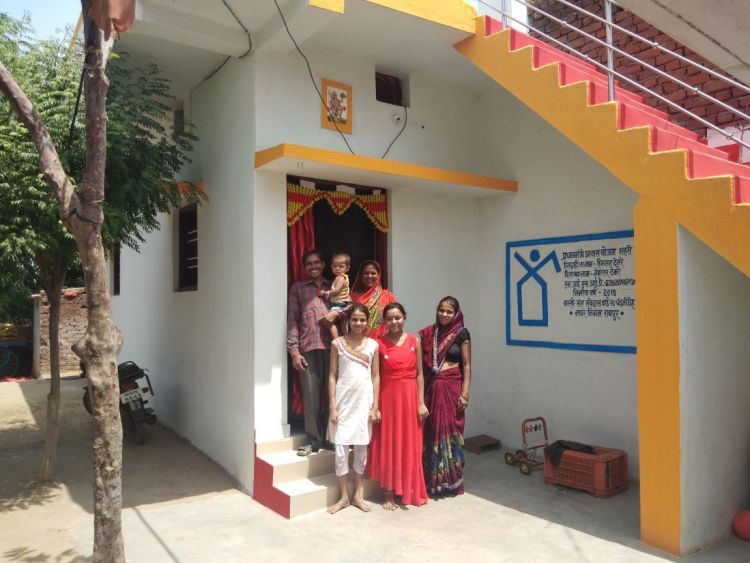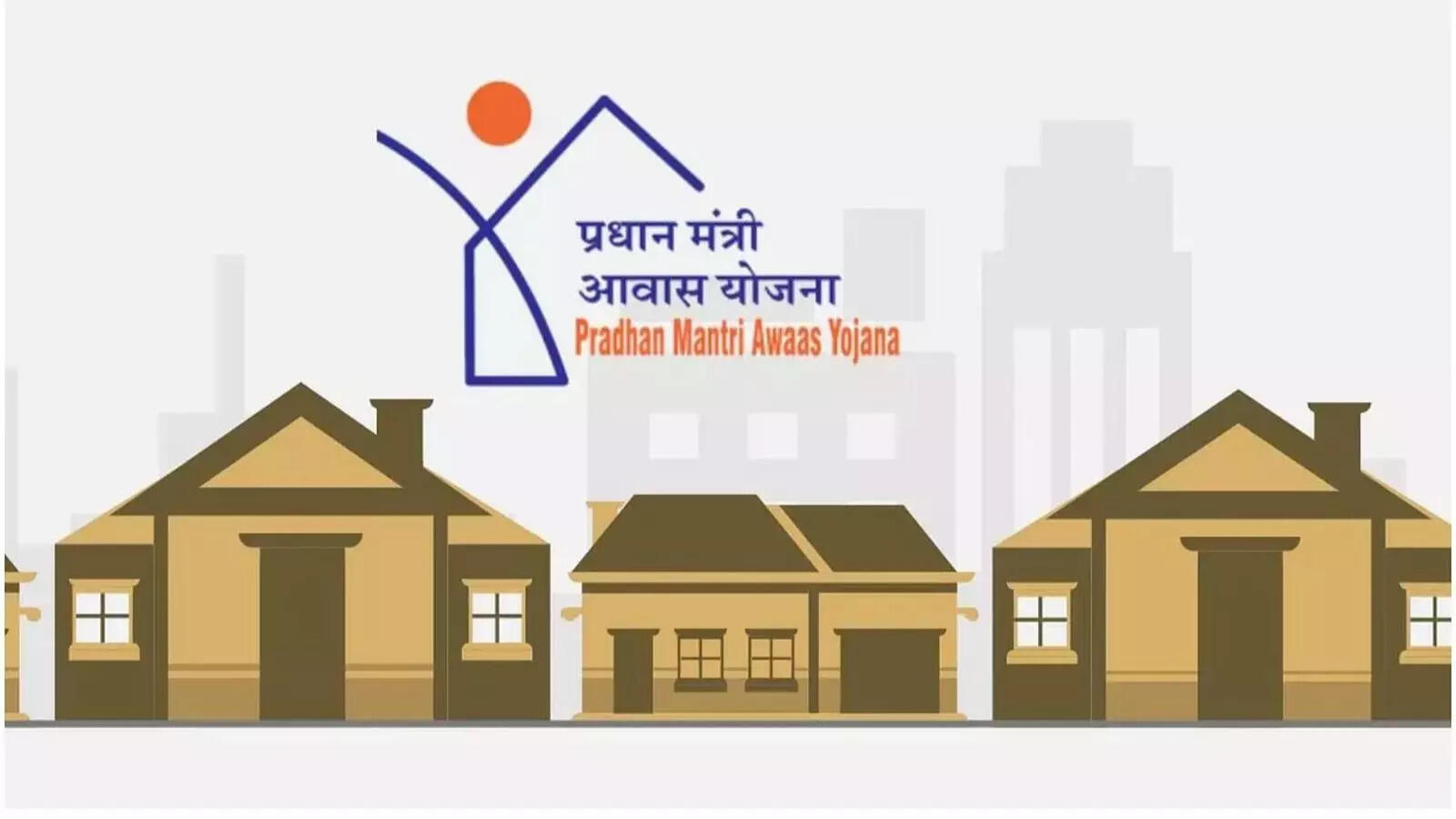PM AWAS YOJANA 2025: A NEW ERA IN AFFORDABLE HOUSING
The Pradhan Mantri Awas Yojana (PMAY) continues to be a beacon of hope for millions of Indian families aspiring to own a home. Launched in 2015 with the ambitious goal of “Housing for All,” the scheme has evolved into one of the world’s largest affordable housing initiatives, transforming urban and rural landscapes alike. As of May 2025, the scheme is making headlines again with the extension of survey deadlines, the rollout of new beneficiary lists, and the government’s renewed commitment to inclusivity and transparency. With a target of constructing over 3 crore homes by 2029, the PM Awas Yojana is reshaping the dreams and destinies of India’s economically weaker sections, low-income, and middle-income families.
The Pradhan Mantri Awas Yojana has not only provided shelter but also boosted the local economies by creating job opportunities in construction, allied industries, and supply chains. Skilled and unskilled laborers have found steady employment, which has improved livelihoods and contributed to poverty alleviation. This multiplier effect underscores the scheme’s role as a catalyst for broader socio-economic development beyond just housing.
In many regions, PMAY has encouraged the adoption of innovative building technologies and sustainable materials. The government promotes eco-friendly construction practices, such as the use of fly ash bricks, solar panels, and rainwater harvesting systems. These initiatives not only reduce the environmental footprint but also lower utility costs for homeowners, making the houses more affordable and sustainable in the long run.
PM AWAS YOJANA SURVEY 2025: LAST DATE EXTENDED, MORE FAMILIES INCLUDED
One of the most significant updates in 2025 is the extension of the PM Awas Yojana Gramin survey deadline. Recognizing that many rural families-especially those in remote and difficult-to-reach areas-were unable to complete the survey in time, the government has extended the last date to May 15, 2025. This move ensures that no eligible family is left behind, and every deserving household has a fair chance to benefit from the scheme.
The survey is a critical step in identifying beneficiaries who will receive financial assistance to build pucca (permanent) houses. Eligible families in plain areas can receive up to ₹1,20,000, while those in hilly or difficult regions are entitled to ₹1,30,000. The assistance is disbursed in three installments, ensuring transparency and accountability at every stage. The government has directed all states to expedite the survey process and maximize outreach, especially among marginalized and vulnerable groups.
PMAY URBAN AND GRAMIN: BRIDGING THE RURAL-URBAN DIVIDE
The PM Awas Yojana operates through two main components: PMAY-Urban (PMAY-U) and PMAY-Gramin (PMAY-G). PMAY-U targets urban households, aiming to provide affordable housing to all eligible city dwellers by supporting the construction of new homes and offering credit-linked subsidies on home loans. The scheme’s urban phase has already sanctioned over 3.21 crore houses, with 2.67 crore completed as of November 2024, and continues to prioritize sustainable, eco-friendly construction and amenities like toilets, water, and electricity.
PMAY-G, on the other hand, focuses on rural India, where the need for secure housing is most acute. The scheme provides financial aid for building permanent homes and ensures that even the most remote villages are included. With the latest survey extension, more rural families are expected to join the beneficiary list, further bridging the rural-urban housing gap.
Women’s empowerment remains a cornerstone of PMAY’s philosophy. By mandating joint or sole ownership of houses in the name of female family members, the scheme is helping to enhance women’s financial security and social status. This approach is gradually changing traditional mindsets and fostering gender equality in property rights, which has far-reaching implications for community development.
Despite significant progress, awareness about PMAY benefits still remains limited in some remote and tribal areas. The government, along with NGOs, is intensifying outreach efforts through camps, workshops, and door-to-door campaigns to educate eligible families. These efforts aim to ensure that no deserving beneficiary is left out due to lack of information or procedural hurdles.


PMAY 2025: HOW TO APPLY AND WHO IS ELIGIBLE?
Applying for PMAY has become more accessible than ever, thanks to digital platforms and simplified procedures. Applicants can register online via the official PMAY website or offline at Common Service Centres (CSCs) and gram panchayats. The application process involves verifying eligibility, submitting Aadhaar details, and providing income and property information. Categories are based on annual household income: Economically Weaker Section (EWS) up to ₹3 lakh, Low-Income Group (LIG) ₹3–6 lakh, and Middle-Income Groups (MIG-I and MIG-II) up to ₹18 lakh.
Eligibility criteria for PMAY-G include being a rural resident without a pucca house, not owning a vehicle, and not being a government employee or income tax payer. Landholding limits also apply. The government’s focus on transparency is reflected in the public availability of beneficiary lists and the use of mobile apps for self-survey and application tracking.
PMAY BENEFICIARY LIST 2025: TRANSPARENCY AND ACCOUNTABILITY
To ensure fairness, the government regularly updates and publishes the PMAY beneficiary list. This allows applicants to check their status, verify eligibility, and track the progress of their applications online without needing a registration number. The list is available state-wise for both urban and rural beneficiaries, promoting transparency and minimizing the risk of exclusion or fraud.
The scheme also offers special provisions, such as priority allocation of ground-floor homes for differently-abled and senior citizens, and a 6.5% interest subsidy on home loans for up to 15 years under the Credit Linked Subsidy Scheme (CLSS). These measures make PMAY one of the most inclusive and far-reaching housing initiatives in India’s history.
PMAY 2.0: A VISION FOR SUSTAINABLE AND INCLUSIVE GROWTH
The second phase of PMAY, running from 2025 to 2029, aims to construct 3 crore new homes, with 1 crore in urban areas and 2 crore in rural regions. The scheme emphasizes sustainable construction, eco-friendly materials, and the integration of basic amenities like gas, electricity, and toilets. The government is also encouraging women’s ownership of property by mandating joint or sole ownership for female family members in many cases.
This vision aligns with the broader goal of inclusive growth, ensuring that every Indian-regardless of geography, income, or social status-can aspire to a dignified life in a safe and permanent home.
The integration of digital technology has streamlined the application and monitoring processes of PMAY. Mobile apps and online portals allow applicants to track their status in real-time, reducing delays and enhancing transparency. This digital push has made the scheme more accessible, especially for younger applicants and those in urban areas with better internet connectivity.
Looking ahead, the government plans to further strengthen PMAY by incorporating smart home technologies and disaster-resilient designs. These enhancements will make homes safer and more comfortable, especially in regions prone to natural calamities. By continuously evolving, PMAY aims to set new standards in affordable housing that combine quality, safety, and sustainability.


PMAY’S TRANSFORMATIVE IMPACT: STORIES FROM THE GROUND
Across India, the impact of PMAY is visible in the smiles of families who have moved from makeshift shelters to sturdy, well-equipped homes. Beneficiaries recount how the scheme has changed their lives, providing security, improved health, and opportunities for children to study in better conditions. The scheme’s emphasis on women’s empowerment and community participation has fostered a sense of pride and ownership among recipients.
Local governments and NGOs are playing a crucial role in ensuring that the benefits of PMAY reach the last mile. Training programs, awareness drives, and technical support are helping families navigate the application process and make the most of the scheme’s offerings.
A key factor in the ongoing success of PMAY is the strong partnership between central, state, and local governments. This collaborative approach ensures that the scheme is tailored to the unique needs of each region, from the densely populated cities of Maharashtra to the remote villages of the Northeast. Regular feedback loops and decentralized decision-making help address challenges quickly and keep projects on track, making the program more responsive and effective.
Financial inclusion has also been a major focus under PMAY. The scheme has facilitated easier access to credit for low-income families through tie-ups with banks and housing finance companies. The Credit Linked Subsidy Scheme (CLSS) has made home loans more affordable, reducing the financial burden on beneficiaries and encouraging them to invest in better living conditions. This has led to a significant increase in home ownership among first-time buyers from marginalized communities.
CHALLENGES AND THE ROAD AHEAD
Despite its successes, PMAY faces challenges such as land acquisition delays, administrative bottlenecks, and the need for greater awareness in remote areas. The government is actively addressing these issues by leveraging technology, streamlining procedures, and extending deadlines to accommodate more families. As India moves toward its goal of “Housing for All,” continuous monitoring, feedback, and innovation will be key to overcoming obstacles.
The social impact of PMAY extends beyond bricks and mortar. Stable housing has been linked to improvements in health, education, and overall well-being. Children in PMAY homes are more likely to attend school regularly, and families report better health outcomes due to improved sanitation and access to clean water. These ripple effects contribute to the long-term upliftment of entire communities.
As PMAY moves into its next phase, ongoing monitoring and community participation will be crucial. The government is encouraging beneficiaries to take an active role in maintaining and upgrading their homes, fostering a sense of ownership and pride. By empowering citizens and adapting to changing needs, PMAY is poised to remain a cornerstone of India’s journey toward inclusive growth and social equity.
CONCLUSION: PM AWAS YOJANA’S ENDURING LEGACY
The PM Awas Yojana stands as a testament to India’s commitment to social justice and inclusive development. With over 3 crore homes targeted and millions already delivered, the scheme is not just building houses-it is building futures. The recent extension of survey deadlines and the launch of new beneficiary lists underscore the government’s resolve to leave no one behind. As PMAY enters its next phase, its transformative impact will continue to uplift communities, empower women, and drive India closer to the dream of a home for every family.
Follow: PMAY
Also read: Alarming Waves: Hong Kong and Singapore’s COVID-19 Surge Sparks Heartfelt Urgent Calls for Vigilance


